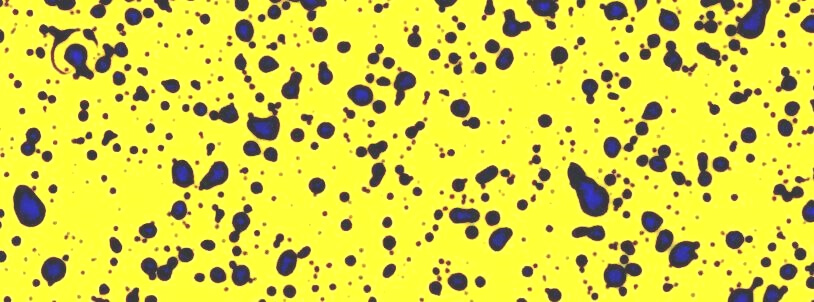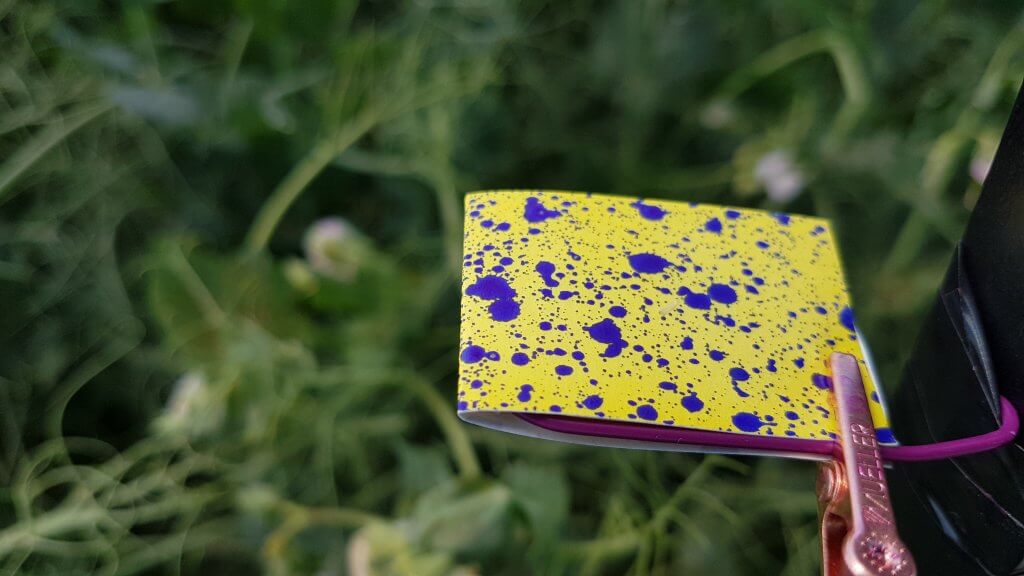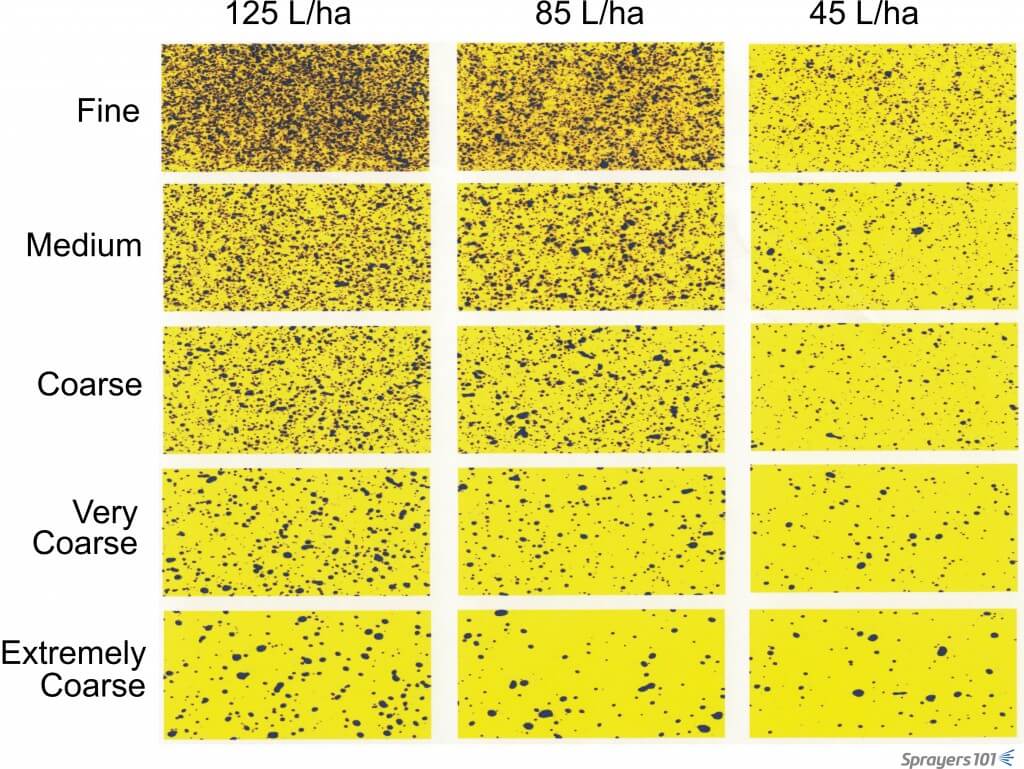Water Sensitive Paper
Water-sensitive paper is a useful tool for assessing spray coverage. Here are a few tips for making it work for you.
Water-sensitive paper is manufactured by a number of companies, including Syngenta, Spot On, and WS Paper and is available for purchase (see here for comparisons). The papers are a useful tool for helping calibrate aerial and ground sprayers because spray deposition becomes visible immediately after spraying. With the proper equipment, droplet size and coverage can be estimated from scanned images.

Simply place the paper on or near the target of interest. On most cases for herbicide application, it can be placed on the ground. It can also be attached to leaves or stems using paperclips.

When water comes in contact with the paper, it turns blue, and spray droplets as small as 50 µm become visible. Avoid touching the paper with bare hands except from the edges – you’ll see your fingerprints. Wearing gloves helps if you plan to handle many of them. Wait for the paper to dry before storing or stacking.
If left exposed to air, they will soon turn completely blue from atmospheric humidity. The same will happen if stored in a plastic bag before they are completely dry.
To show how these cards can be useful for an applicator, we prepared 15 cards (five spray qualities at three water volumes each). They can be used as a guide to assess the quality of the spray job. As a start, aim for a Coarse spray quality, and use enough water to achieve coverage about in the middle of the matrix. Avoid low water volumes in combination with extremely coarse sprays.

This matrix can be used as a guide to assess approximate coverage of a spray under field conditions.
A high-res pdf of the matrix (in US units) can be downloaded here.
The metric version is here.
The spray deposits spread out after they hit the paper, and as a result the deposit diameter is about twice the actual droplet diameter. This ratio is known as the spread factor, and it must be known before an accurate droplet size measurement can be done. That’s easier said than done because the spread factor depends on the properties of the spray liquid (surface tension, for example), the diameter of the droplet, and also the humidity at the time of the trial. On humid days, the spread factor increases and in fact the papers may turn entirely blue just from exposure to that humidity.
A practical water volume limit for making an accurate measurement is about 10 US gpa or 100 L/ha. At higher volumes, the droplets coalesce and it’s hard to tell how many droplets for any given deposit.
Visitor Rating: 5 Stars
Visitor Rating: 5 Stars
Visitor Rating: 5 Stars
Visitor Rating: 5 Stars
Visitor Rating: 3 Stars
Visitor Rating: 5 Stars
Visitor Rating: 5 Stars
Visitor Rating: 3 Stars
Visitor Rating: 3 Stars